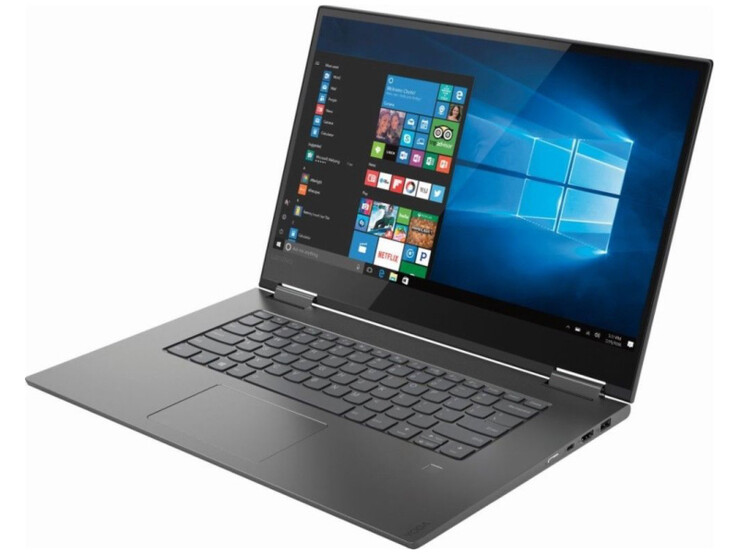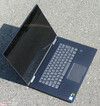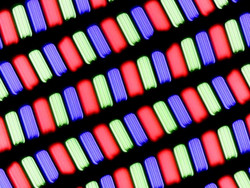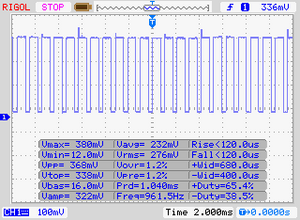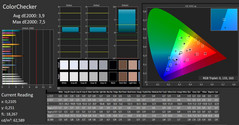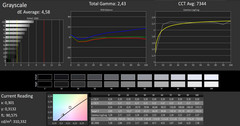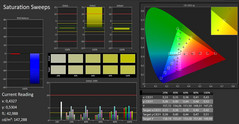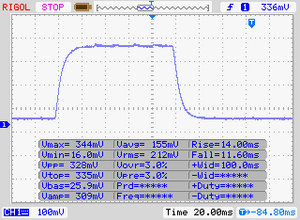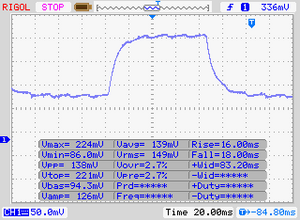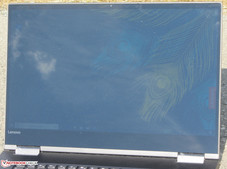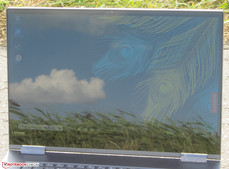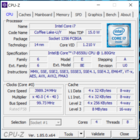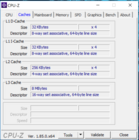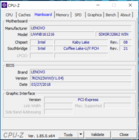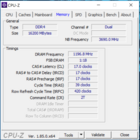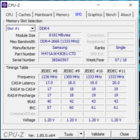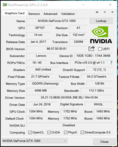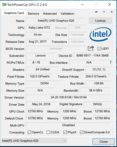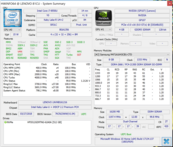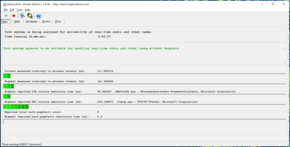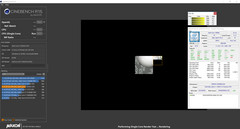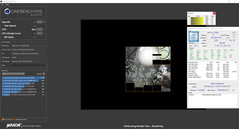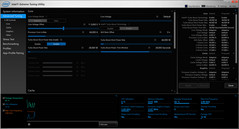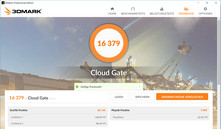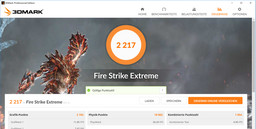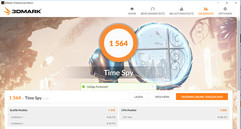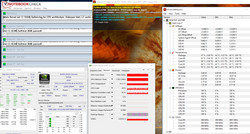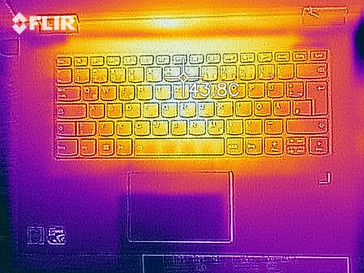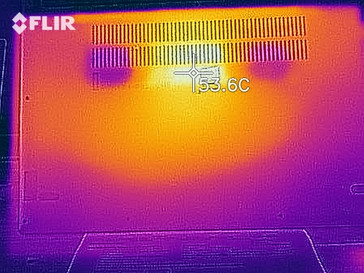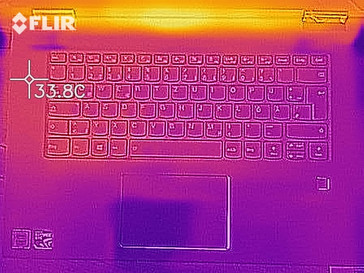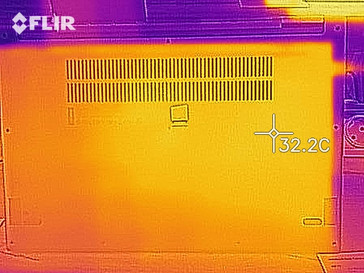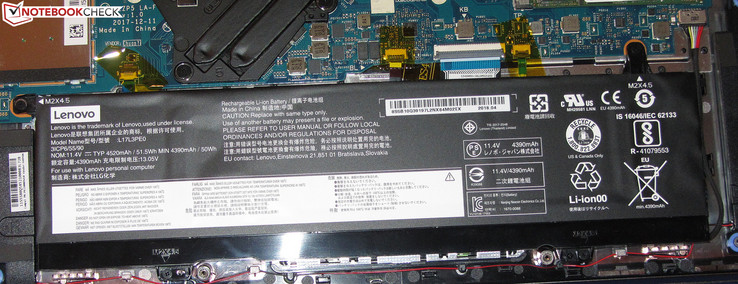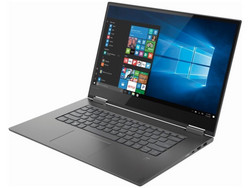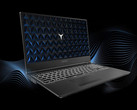Lenovo Yoga 730-15IKB (i7-8550U, GTX 1050, SSD, 4K) Convertible Review

The Yoga 730-15IKB is a 15.6-inch convertible that comes with a dedicated graphics card, which means that it can be used to play video games. The Yoga 730-15IKB is a successor to the previously reviewed Yoga 720-15IKB. The biggest difference between the two devices lies inside: Lenovo replaced the standard mobile processor (TDP: 45 watts) found in the Yoga 720 with a ULV model (TDP: 15 watts). The competing devices include: The Asus ZenBook Flip 15 UX561UD, the Acer Spin 5 SP515-51GN-80A3 and the HP Spectre x360 15-ch011nr.
Because the Yoga 720-15IKB and the Yoga 730-15IKB are identically built, we shall skip the sections that deal with the input devices and the speakers, and we are also not going to provide detailed descriptions of the case and the connectivity options. You can find all the appropriate information in our review of the Yoga 720-15IKB.
Case & Connectivity – Differences between the two Yoga laptops
- At first glance, both laptops look almost identical. However, there are a few differences between the two convertibles. The Yoga 730-15IKB is a little thinner than its predecessor, the Yoga 720-15IKB. There are also a few small differences in terms of the size, width and the length. There are no differences when it comes to the build quality, rigidity and the choice of materials.
- The standard mobile processor found in the Yoga 720-15IKB (TDP: 45 watts; Core i7-7700HQ) was replaced with a ULV model (TDP: 15 watts; Core i7-8550U).
- The Yoga 730-15IKB offers all the ports that the Yoga 720-15IKB did. However, the Yoga 730 comes with an additional HDMI port, which means that it can output two video signals at the same time, one via Thunderbolt 3 and the other via HDMI.
- The battery of the Yoga 730 has a significantly smaller capacity than that of the Yoga 720 (51.5 Wh vs. 72 Wh).
Connectivity
Display – Lenovo notebook with a 4K IPS screen
The 15.6-inch touchscreen of the Yoga 730 has a native resolution of 3840x2160. The display offers a good contrast ratio (1066:1) and a good brightness (298.8 cd/m²). Competitors such as the Asus ZenBook Flip 15 UX561UD and the HP Spectre x360 15 feature brighter displays.
Unfortunately, at 90% brightness and below, the display exhibits PWM flickering with a frequency of 961 Hz. Because of such a high frequency, most sensitive individuals should not experience any adverse effects such as headaches or eye strain.
| |||||||||||||||||||||||||
Brightness Distribution: 84 %
Center on Battery: 314 cd/m²
Contrast: 1066:1 (Black: 0.29 cd/m²)
ΔE ColorChecker Calman: 3.9 | ∀{0.5-29.43 Ø4.78}
ΔE Greyscale Calman: 4.58 | ∀{0.09-98 Ø5}
90% sRGB (Argyll 1.6.3 3D)
39% AdobeRGB 1998 (Argyll 1.6.3 3D)
65.8% AdobeRGB 1998 (Argyll 3D)
90% sRGB (Argyll 3D)
68.7% Display P3 (Argyll 3D)
Gamma: 2.43
CCT: 7344 K
| Lenovo Yoga 730-15IKB IPS, 3840x2160, 15.6" | Lenovo Yoga 720-15IKB-80X7 IPS, 1920x1080, 15.6" | Acer Spin 5 SP515-51GN-80A3 a-Si TFT-LCD, LCM, IPS, 1920x1080, 15.6" | Asus ZenBook Flip 15 UX561UD IPS, 3840x2160, 15.6" | HP Spectre x360 15t-bl100 IPS, 3840x2160, 15.6" | HP Spectre x360 15-ch011nr IPS, 3840x2160, 15.6" | |
|---|---|---|---|---|---|---|
| Display | -1% | -39% | 29% | -3% | 1% | |
| Display P3 Coverage (%) | 68.7 | 65 -5% | 38.73 -44% | 86.6 26% | 66.6 -3% | 68.5 0% |
| sRGB Coverage (%) | 90 | 90.8 1% | 58.3 -35% | 100 11% | 86.9 -3% | 90.7 1% |
| AdobeRGB 1998 Coverage (%) | 65.8 | 65.8 0% | 40.02 -39% | 99.5 51% | 63.5 -3% | 66.3 1% |
| Response Times | 4% | -20% | -35% | -20% | -11% | |
| Response Time Grey 50% / Grey 80% * (ms) | 34 ? | 29.6 ? 13% | 42 ? -24% | 52 ? -53% | 41.2 ? -21% | 38 ? -12% |
| Response Time Black / White * (ms) | 25 ? | 26.4 ? -6% | 29 ? -16% | 29 ? -16% | 29.6 ? -18% | 27.6 ? -10% |
| PWM Frequency (Hz) | 961 ? | 25510 ? | 1000 | 943 ? | ||
| Screen | -3% | 8% | 23% | 4% | -10% | |
| Brightness middle (cd/m²) | 309 | 300.9 -3% | 221 -28% | 380 23% | 338.7 10% | 329.3 7% |
| Brightness (cd/m²) | 299 | 285 -5% | 224 -25% | 371 24% | 325 9% | 316 6% |
| Brightness Distribution (%) | 84 | 92 10% | 89 6% | 87 4% | 91 8% | 84 0% |
| Black Level * (cd/m²) | 0.29 | 0.24 17% | 0.12 59% | 0.28 3% | 0.28 3% | 0.31 -7% |
| Contrast (:1) | 1066 | 1254 18% | 1842 73% | 1357 27% | 1210 14% | 1062 0% |
| Colorchecker dE 2000 * | 3.9 | 5 -28% | 4.12 -6% | 4.38 -12% | 4.9 -26% | 4.78 -23% |
| Colorchecker dE 2000 max. * | 7.5 | 10.2 -36% | 6.41 15% | 7.59 -1% | 8.7 -16% | 11.75 -57% |
| Greyscale dE 2000 * | 4.58 | 7 -53% | 3.4 26% | 3.6 21% | 5.5 -20% | 7.9 -72% |
| Gamma | 2.43 91% | 2.34 94% | 2.54 87% | 2.32 95% | 2.08 106% | 2.24 98% |
| CCT | 7344 89% | 6578 99% | 6893 94% | 6860 95% | 7498 87% | 8323 78% |
| Color Space (Percent of AdobeRGB 1998) (%) | 39 | 59 51% | 37 -5% | 88 126% | 63.5 63% | 58.8 51% |
| Color Space (Percent of sRGB) (%) | 90 | 90 0% | 58 -36% | 100 11% | 86.92 -3% | 90.4 0% |
| Colorchecker dE 2000 calibrated * | 3.51 | |||||
| Total Average (Program / Settings) | 0% /
-2% | -17% /
-5% | 6% /
16% | -6% /
-0% | -7% /
-8% |
* ... smaller is better
Screen Flickering / PWM (Pulse-Width Modulation)
| Screen flickering / PWM detected | 961 Hz | ≤ 90 % brightness setting | |
The display backlight flickers at 961 Hz (worst case, e.g., utilizing PWM) Flickering detected at a brightness setting of 90 % and below. There should be no flickering or PWM above this brightness setting. The frequency of 961 Hz is quite high, so most users sensitive to PWM should not notice any flickering. In comparison: 53 % of all tested devices do not use PWM to dim the display. If PWM was detected, an average of 8108 (minimum: 5 - maximum: 343500) Hz was measured. | |||
Right out of the box, the display offers a fairly good color reproduction. With a DeltaE 2000 color deviation of 3.9, it misses the mark slightly (DeltaE less than 3). The display does not suffer from a bluish cast. The screen cannot fully cover either the Adobe RGB color space (39%) or the sRGB color space (90%).
By means of our color profile, the color reproduction can be improved. However, before downloading it, you should make sure that your laptop has the same display model (manufacturer + model number) as our review device, because otherwise our color profile can result in worse color reproduction. Displays from different manufacturers can often be found within notebooks from the same model range.
Display Response Times
| ↔ Response Time Black to White | ||
|---|---|---|
| 25 ms ... rise ↗ and fall ↘ combined | ↗ 14 ms rise | |
| ↘ 11 ms fall | ||
| The screen shows relatively slow response rates in our tests and may be too slow for gamers. In comparison, all tested devices range from 0.1 (minimum) to 240 (maximum) ms. » 58 % of all devices are better. This means that the measured response time is worse than the average of all tested devices (20.2 ms). | ||
| ↔ Response Time 50% Grey to 80% Grey | ||
| 34 ms ... rise ↗ and fall ↘ combined | ↗ 16 ms rise | |
| ↘ 18 ms fall | ||
| The screen shows slow response rates in our tests and will be unsatisfactory for gamers. In comparison, all tested devices range from 0.165 (minimum) to 636 (maximum) ms. » 45 % of all devices are better. This means that the measured response time is similar to the average of all tested devices (31.6 ms). | ||
The Yoga 730 comes with an IPS panel with very good viewing angles. Therefore, the screen content can be read from any position. Outdoors, the laptop can be used only when the sun is not shining too brightly. Moreover, strong reflections make reading screen content more difficult.
Performance – Lenovo’s Yoga offers a lot of performance
With the Yoga 730-15IKB, Lenovo has a 15.6-inch convertible in its product range. It offers more than enough performance for all modern usage scenarios. Thanks to a dedicated GPU, video games are playable on the Yoga 730-15IKB. Our review device can be had for 1700 Euros (~$1990).
Processor
The Yoga 730 is powered by a Core i7-8550U (Kaby Lake Refresh) CPU from Intel. The Intel CPU has four cores and a base clock rate of 1.8 GHz. The Core i7-8550U is a ULV processor that provides enough performance for all modern usage scenarios. Thanks to Intel’s Turbo Boost technology, the CPU’s clock rate can be boosted up to 4 GHz.
In the multi-core Cinebench benchmarks, the CPU runs for a few seconds at 3.7 to 4 GHz. After that the processor operates at 3 to 3.1 GHz. In the single-core benchmarks, the clock rate fluctuates between 3.4 and 4 GHz. When running on battery power, things look different. The CPU runs constantly at 1.8 GHz in the multi-core benchmarks and at 3.7 to 4 GHz in the single-core benchmarks.
We check if the Turbo boost can be used over an extended period of time by running the Cinebench multi-core benchmark in a continuous loop for 30 minutes. The results sink after the first benchmark run. After that, they stay on the same level. The Turbo boost is used. However, it does not run at full speed.
All in all, the Core i7 performs very well. In the single-core benchmarks, the Yoga 730 does as well as other competing devices such as the Asus ZenBook Flip 15 UX561UD and the Acer Spin 5 SP515-51GN. However, the Yoga 730 performs better in the multi-core benchmarks. In the Cinebench loop, the CPU of the Yoga 730 runs at higher clock rates than the competing devices.
In the single-core benchmarks, the Yoga 730 outperforms its predecessor. Apparently, the CPU in the predecessor model cannot operate at full speed. In terms of multi-core performance, both devices are on the same level.
| Geekbench 3 | |
| 32 Bit Multi-Core Score | |
| Lenovo Yoga 730-15IKB | |
| Average Intel Core i7-8550U (8918 - 14144, n=12) | |
| 32 Bit Single-Core Score | |
| Lenovo Yoga 730-15IKB | |
| Average Intel Core i7-8550U (2471 - 4020, n=12) | |
| Geekbench 4.0 | |
| 64 Bit Multi-Core Score | |
| Average of class Convertible (23833 - 37474, n=3, last 2 years) | |
| Lenovo Yoga 730-15IKB | |
| Average Intel Core i7-8550U (10747 - 15294, n=9) | |
| 64 Bit Single-Core Score | |
| Average of class Convertible (6365 - 8254, n=3, last 2 years) | |
| Lenovo Yoga 730-15IKB | |
| Average Intel Core i7-8550U (4439 - 4858, n=9) | |
| Geekbench 4.4 | |
| 64 Bit Multi-Core Score | |
| Lenovo Yoga 730-15IKB | |
| Average Intel Core i7-8550U (10869 - 16294, n=11) | |
| 64 Bit Single-Core Score | |
| Lenovo Yoga 730-15IKB | |
| Average Intel Core i7-8550U (4555 - 4997, n=11) | |
| Mozilla Kraken 1.1 - Total | |
| Lenovo Yoga 730-15IKB (Edge 42) | |
| Average Intel Core i7-8550U (877 - 2114, n=45) | |
| Asus ZenBook Flip 15 UX561UD | |
| HP Spectre x360 15-ch011nr (Edge 41.16299.15.0) | |
| Acer Spin 5 SP515-51GN-80A3 (Edge 41.16299.15.0) | |
| Average of class Convertible (407 - 1089, n=59, last 2 years) | |
| Octane V2 - Total Score | |
| Average of class Convertible (50984 - 123023, n=14, last 2 years) | |
| Acer Spin 5 SP515-51GN-80A3 (Edge 41.16299.15.0) | |
| Asus ZenBook Flip 15 UX561UD | |
| Lenovo Yoga 730-15IKB (Edge 42) | |
| Average Intel Core i7-8550U (17296 - 42043, n=39) | |
| HP Spectre x360 15-ch011nr (Edge 41.16299.15.0) | |
| JetStream 1.1 - Total Score | |
| Acer Spin 5 SP515-51GN-80A3 (Edge 41.16299.15.0) | |
| HP Spectre x360 15t-bl100 (40.15063.674.0) | |
| Asus ZenBook Flip 15 UX561UD | |
| Lenovo Yoga 730-15IKB (Edge 42) | |
| Average Intel Core i7-8550U (141.9 - 288, n=61) | |
| HP Spectre x360 15-ch011nr (Edge 41.16299.15.0) | |
* ... smaller is better
System Performance
The Core-i7 processor and a fast NVMe SSD create a very responsive system. We did not encounter any problems. The Yoga 730 offers more than enough computing power for such usage scenarios as office work and Internet browsing. The Yoga 730 can run most modern video games, thanks to a dedicated GPU. Our review device achieves very good results in the PCMark benchmarks. An increase in overall performance is not possible.
The Yoga 730 achieves worse results in the PCMark 8 benchmarks than the similarly equipped Acer Spin 5 SP515-51GN, because the display of the Yoga 730 (3840x2160) has a much higher resolution than that of the Spin 5 (1920x1080).
| PCMark 7 Score | 6299 points | |
| PCMark 8 Home Score Accelerated v2 | 3505 points | |
| PCMark 8 Creative Score Accelerated v2 | 4961 points | |
| PCMark 8 Work Score Accelerated v2 | 4382 points | |
| PCMark 10 Score | 4347 points | |
Help | ||
Storage Devices
An NVMe SSD from SK Hynix serves as the system drive. It comes in the M.2-2280 form-factor and has a capacity of 512 GB. Right out of the box, only 415 GB is available to the user. The rest of the storage space is occupied by the Windows installation files and the recovery partition. The transfer rates are in good order. NVMe SSDs achieve much faster transfer speeds than SATA III SSDs, because they are connected via PCI Express 3.0 x4.
| Lenovo Yoga 730-15IKB SK Hynix PC401 512GB M.2 (HFS512GD9TNG) | Lenovo Yoga 720-15IKB-80X7 Samsung PM961 MZVLW256HEHP | Acer Spin 5 SP515-51GN-80A3 Intel SSD 600p SSDPEKKW256G7 | Asus ZenBook Flip 15 UX561UD Micron 1100 MTFDDAV256TBN | HP Spectre x360 15t-bl100 Samsung PM961 NVMe MZVLW512HMJP | HP Spectre x360 15-ch011nr SK hynix PC401 NVMe 500 GB | Average SK Hynix PC401 512GB M.2 (HFS512GD9TNG) | |
|---|---|---|---|---|---|---|---|
| CrystalDiskMark 3.0 | 19% | -17% | -52% | 27% | 11% | ||
| Read Seq (MB/s) | 1825 | 2046 12% | 1187 -35% | 476.3 -74% | 1248 -32% | 1748 ? -4% | |
| Write Seq (MB/s) | 812 | 1213 49% | 599 -26% | 394.4 -51% | 1476 82% | 1088 ? 34% | |
| Read 512 (MB/s) | 697 | 1242 78% | 935 34% | 291.9 -58% | 849 22% | 1134 ? 63% | |
| Write 512 (MB/s) | 633 | 799 26% | 609 -4% | 291.4 -54% | 1118 77% | 918 ? 45% | |
| Read 4k (MB/s) | 44.48 | 58.1 31% | 35.61 -20% | 27.54 -38% | 58.8 32% | 44.9 ? 1% | |
| Write 4k (MB/s) | 142.6 | 146.2 3% | 134.4 -6% | 92.7 -35% | 155.2 9% | 135.8 ? -5% | |
| Read 4k QD32 (MB/s) | 571 | 415.1 -27% | 289.3 -49% | 247.5 -57% | 645 13% | 427 ? -25% | |
| Write 4k QD32 (MB/s) | 487.2 | 369.2 -24% | 331.1 -32% | 247 -49% | 547 12% | 386 ? -21% |
Graphics Card
The Yoga 730 comes with the GeForce GTX 1050. The GTX 1050 is a dedicated, upper mid-range GPU, which is based on Nvidia’s current Pascal architecture. It supports DirectX 12 and has a maximum core clock of up to 1493 MHz. The GPU comes with 4 GB of GDDR5 VRAM. The results in the 3DMark benchmarks are on the normal level for this kind of GPU. However, the results fall slightly behind those of other GTX 1050-based notebooks. This can be attributed to the thinness of the laptop. As a rule, thicker notebooks offer better cooling solutions than thin and light devices like the Yoga 730. As a result of this, the GPUs can run at higher clock speeds.
Besides the GTX 1050, the convertible also features Intel’s UHD Graphics 620. The Yoga 730 also supports Nvidia’s Optimus technology, which allows automatic switching between a dedicated GPU and an integrated graphics adapter.
| 3DMark 06 Standard Score | 17289 points | |
| 3DMark 11 Performance | 6282 points | |
| 3DMark Ice Storm Standard Score | 33786 points | |
| 3DMark Cloud Gate Standard Score | 16379 points | |
| 3DMark Fire Strike Score | 5412 points | |
| 3DMark Fire Strike Extreme Score | 2217 points | |
| 3DMark Time Spy Score | 1564 points | |
Help | ||
Gaming Performance
The GPU of the Yoga 730-15IKB can run all video games that we tested at decent frame rates. In most cases, the games can be run at Full HD resolution and on the medium to high settings. A few titles from 2017/2018 require the resolution and detail settings to be lowered in order to achieve playable frame rates. The frame rates are on a normal level for this kind of GPU. However, other GTX 1050-based laptops can achieve slightly higher frame rates. It is possible that the GTX 1050 in the Yoga 730 runs at lower clock speeds than in other devices.
The full resolution of the 4K display cannot be used. The GPU is not fit for such high resolutions. Only older titles such as Team Fortress 2 can achieve playable frame rates at 4K resolution. Those who want to be able to play video games in 4K should get a different notebook with at least a GTX 1060, or better yet a GTX 1070.
| low | med. | high | ultra | 4K | |
|---|---|---|---|---|---|
| Tomb Raider (2013) | 318.1 | 86.4 | 84.1 | 65.3 | |
| BioShock Infinite (2013) | 184.2 | 122.1 | 75.2 | 48.6 | |
| Rise of the Tomb Raider (2016) | 91.3 | 66.4 | 36.7 | 29.8 | |
| Rocket League (2017) | 217.4 | 103.5 | 74.7 | 32.5 | |
| Playerunknown's Battlegrounds (PUBG) (2017) | 94.5 | 53.1 | 46.9 | 34.6 | 12.4 |
| Middle-earth: Shadow of War (2017) | 77 | 41 | 32 | 28 | 9 |
| ELEX (2017) | 86.6 | 45.9 | 36.1 | 27.5 | 9 |
| Star Wars Battlefront 2 (2017) | 101 | 58.9 | 48.6 | 36.3 | 2.6 |
| Far Cry 5 (2018) | 68 | 36 | 27 | 23 | 10 |
| BioShock Infinite - 1920x1080 Ultra Preset, DX11 (DDOF) | |
| MSI GL62M 7RD-077 | |
| Average NVIDIA GeForce GTX 1050 Mobile (48.6 - 67.5, n=35) | |
| Lenovo Yoga 720-15IKB-80X7 | |
| Asus ZenBook Flip 15 UX561UD | |
| Acer Spin 5 SP515-51GN-80A3 | |
| Lenovo Yoga 730-15IKB | |
| HP Spectre x360 15-ch011nr | |
| HP Spectre x360 15t-bl100 | |
| Star Wars Battlefront 2 - 1920x1080 High Preset | |
| Lenovo Yoga 730-15IKB | |
| Average NVIDIA GeForce GTX 1050 Mobile (43.2 - 48.6, n=2) | |
| Rocket League - 1920x1080 High Quality AA:High FX | |
| MSI GL62M 7RD-077 | |
| Xiaomi Mi Gaming Laptop 7300HQ 1050Ti | |
| Average NVIDIA GeForce GTX 1050 Mobile (64 - 109, n=3) | |
| Lenovo Yoga 730-15IKB | |
| Middle-earth: Shadow of War - 1920x1080 Medium Preset AA:T | |
| Xiaomi Mi Gaming Laptop 7300HQ 1050Ti | |
| Average NVIDIA GeForce GTX 1050 Mobile (41 - 46, n=2) | |
| Lenovo Yoga 730-15IKB | |
| Rise of the Tomb Raider - 1366x768 Medium Preset AF:2x | |
| MSI GL62M 7RD-077 | |
| Average NVIDIA GeForce GTX 1050 Mobile (49 - 77.3, n=25) | |
| Lenovo Yoga 730-15IKB | |
| Acer Spin 5 SP515-51GN-80A3 | |
| Asus ZenBook Flip 15 UX561UD | |
| HP Spectre x360 15-ch011nr | |
| HP Spectre x360 15t-bl100 | |
Emissions – Quiet Yoga notebook
System Noise
As a rule, the fan stands still when idle. This leads to silent operation. Under load, the fan starts to spin up. We measured a sound pressure level of 37.5 dB(A) under both medium and full loads. The CPU operates at lower clock speeds under full load. All in all, the Yoga 730 produces a normal amount of noise for a convertible with a dedicated GPU.
Noise level
| Idle |
| 30.5 / 30.5 / 30.5 dB(A) |
| Load |
| 37.5 / 37.5 dB(A) |
 | ||
30 dB silent 40 dB(A) audible 50 dB(A) loud |
||
min: | ||
| Lenovo Yoga 730-15IKB i5-8550U, GeForce GTX 1050 Mobile | Lenovo Yoga 720-15IKB-80X7 i7-7700HQ, GeForce GTX 1050 Mobile | Acer Spin 5 SP515-51GN-80A3 i5-8550U, GeForce GTX 1050 Mobile | Asus ZenBook Flip 15 UX561UD i5-8550U, GeForce GTX 1050 Mobile | HP Spectre x360 15t-bl100 i5-8550U, GeForce MX150 | HP Spectre x360 15-ch011nr i5-8550U, GeForce MX150 | Average NVIDIA GeForce GTX 1050 Mobile | Average of class Convertible | |
|---|---|---|---|---|---|---|---|---|
| Noise | 1% | -5% | -1% | 1% | 3% | -6% | 13% | |
| off / environment * (dB) | 30.5 | 28.2 8% | 30.2 1% | 30.4 -0% | 28.4 7% | 28.6 6% | 29.5 ? 3% | 23.8 ? 22% |
| Idle Minimum * (dB) | 30.5 | 28.2 8% | 30.2 1% | 31.3 -3% | 28.4 7% | 29.2 4% | 31.2 ? -2% | 24.1 ? 21% |
| Idle Average * (dB) | 30.5 | 28.2 8% | 30.2 1% | 31.3 -3% | 28.4 7% | 29.2 4% | 31.4 ? -3% | 24.6 ? 19% |
| Idle Maximum * (dB) | 30.5 | 28.2 8% | 30.9 -1% | 31.3 -3% | 28.4 7% | 29.2 4% | 31.9 ? -5% | 25.3 ? 17% |
| Load Average * (dB) | 37.5 | 39 -4% | 42.4 -13% | 36.4 3% | 41.6 -11% | 29.2 22% | 40.6 ? -8% | 33.6 ? 10% |
| Load Maximum * (dB) | 37.5 | 46.3 -23% | 44.8 -19% | 37.1 1% | 41.6 -11% | 45.7 -22% | 46.1 ? -23% | 41.2 ? -10% |
| Witcher 3 ultra * (dB) | 36.1 | 38.4 |
* ... smaller is better
Temperature
The Yoga 730 gets different results in our stress test (Prime95 and FurMark running for at least one hour) when it is plugged in and when it is running on battery power. When connected to power, the CPU and the GPU run at high clock rates. During the stress test, the CPU frequency falls down to 400 MHz. The core clock of the GPU stabilizes at about 1500 MHz. When running on battery power, the clock rate of the CPU fluctuates between 400 MHz and 1.8 GHz. The graphics card runs at anywhere between 400 MHz and 1.3 GHz.
The laptop does not become excessively hot. During the stress test, the 40-°C (104 °F) mark is exceeded at four measurement points. The stress test represents an extreme case scenario, which is highly unlikely to occur in real life. We use this test to see how the system fares under full load.
(±) The maximum temperature on the upper side is 40.9 °C / 106 F, compared to the average of 35.4 °C / 96 F, ranging from 19.6 to 60 °C for the class Convertible.
(±) The bottom heats up to a maximum of 43 °C / 109 F, compared to the average of 36.8 °C / 98 F
(+) In idle usage, the average temperature for the upper side is 26.5 °C / 80 F, compared to the device average of 30.3 °C / 87 F.
(+) The palmrests and touchpad are cooler than skin temperature with a maximum of 30.3 °C / 86.5 F and are therefore cool to the touch.
(-) The average temperature of the palmrest area of similar devices was 27.9 °C / 82.2 F (-2.4 °C / -4.3 F).
| Lenovo Yoga 730-15IKB i5-8550U, GeForce GTX 1050 Mobile | Lenovo Yoga 720-15IKB-80X7 i7-7700HQ, GeForce GTX 1050 Mobile | Acer Spin 5 SP515-51GN-80A3 i5-8550U, GeForce GTX 1050 Mobile | Asus ZenBook Flip 15 UX561UD i5-8550U, GeForce GTX 1050 Mobile | HP Spectre x360 15t-bl100 i5-8550U, GeForce MX150 | HP Spectre x360 15-ch011nr i5-8550U, GeForce MX150 | Average NVIDIA GeForce GTX 1050 Mobile | Average of class Convertible | |
|---|---|---|---|---|---|---|---|---|
| Heat | -6% | -6% | 3% | -7% | -17% | -7% | -2% | |
| Maximum Upper Side * (°C) | 40.9 | 42.8 -5% | 50.9 -24% | 41.9 -2% | 49.2 -20% | 46.4 -13% | 46.8 ? -14% | 40.8 ? -0% |
| Maximum Bottom * (°C) | 43 | 49.6 -15% | 44.2 -3% | 40.6 6% | 52 -21% | 49 -14% | 45.9 ? -7% | 43.3 ? -1% |
| Idle Upper Side * (°C) | 27.3 | 27.2 -0% | 26.3 4% | 26.6 3% | 24.8 9% | 32 -17% | 27.8 ? -2% | 27.9 ? -2% |
| Idle Bottom * (°C) | 27.4 | 28.6 -4% | 27.1 1% | 26 5% | 26.4 4% | 34.2 -25% | 28.5 ? -4% | 28.7 ? -5% |
* ... smaller is better
Speakers
Lenovo Yoga 730-15IKB audio analysis
(±) | speaker loudness is average but good (73.3 dB)
Bass 100 - 315 Hz
(-) | nearly no bass - on average 16.9% lower than median
(±) | linearity of bass is average (12.2% delta to prev. frequency)
Mids 400 - 2000 Hz
(+) | balanced mids - only 4% away from median
(±) | linearity of mids is average (7.7% delta to prev. frequency)
Highs 2 - 16 kHz
(+) | balanced highs - only 2.6% away from median
(+) | highs are linear (6.1% delta to prev. frequency)
Overall 100 - 16.000 Hz
(±) | linearity of overall sound is average (16.6% difference to median)
Compared to same class
» 30% of all tested devices in this class were better, 4% similar, 66% worse
» The best had a delta of 6%, average was 20%, worst was 57%
Compared to all devices tested
» 28% of all tested devices were better, 6% similar, 66% worse
» The best had a delta of 4%, average was 24%, worst was 134%
Apple MacBook 12 (Early 2016) 1.1 GHz audio analysis
(+) | speakers can play relatively loud (83.6 dB)
Bass 100 - 315 Hz
(±) | reduced bass - on average 11.3% lower than median
(±) | linearity of bass is average (14.2% delta to prev. frequency)
Mids 400 - 2000 Hz
(+) | balanced mids - only 2.4% away from median
(+) | mids are linear (5.5% delta to prev. frequency)
Highs 2 - 16 kHz
(+) | balanced highs - only 2% away from median
(+) | highs are linear (4.5% delta to prev. frequency)
Overall 100 - 16.000 Hz
(+) | overall sound is linear (10.2% difference to median)
Compared to same class
» 7% of all tested devices in this class were better, 2% similar, 91% worse
» The best had a delta of 5%, average was 18%, worst was 53%
Compared to all devices tested
» 4% of all tested devices were better, 1% similar, 94% worse
» The best had a delta of 4%, average was 24%, worst was 134%
Energy Management – Yoga notebook with a downgraded battery
Energy Consumption
There are no abnormalities in terms of energy consumption to report. When idle, we measured a maximum power draw of 10.7 watts. During the stress test (Prime95 and FurMark running for at least one hour), the energy consumption peaked at 94.6 watts. We registered this result at the beginning of the stress test. After 90 seconds, the power consumption fell down to 80 watts. The rated output of the AC adapter amounts to 90 watts. The ULV processor makes itself noticeable under load. Here, the 15-watt Core i7-8550U consumes significantly less power than the 45-watt Core i7-7700HQ found in the Yoga 720-15IKB.
| Off / Standby | |
| Idle | |
| Load |
|
Key:
min: | |
| Lenovo Yoga 730-15IKB i5-8550U, GeForce GTX 1050 Mobile | Lenovo Yoga 720-15IKB-80X7 i7-7700HQ, GeForce GTX 1050 Mobile | Acer Spin 5 SP515-51GN-80A3 i5-8550U, GeForce GTX 1050 Mobile | Asus ZenBook Flip 15 UX561UD i5-8550U, GeForce GTX 1050 Mobile | HP Spectre x360 15t-bl100 i5-8550U, GeForce MX150 | HP Spectre x360 15-ch011nr i5-8550U, GeForce MX150 | Average NVIDIA GeForce GTX 1050 Mobile | Average of class Convertible | |
|---|---|---|---|---|---|---|---|---|
| Power Consumption | -30% | 4% | -37% | -49% | -15% | -36% | 14% | |
| Idle Minimum * (Watt) | 4.8 | 8.3 -73% | 3.9 19% | 5.4 -13% | 11.6 -142% | 5.3 -10% | 6.99 ? -46% | 4.43 ? 8% |
| Idle Average * (Watt) | 10.1 | 10.2 -1% | 6.7 34% | 10.8 -7% | 13.8 -37% | 9.8 3% | 10.7 ? -6% | 7.38 ? 27% |
| Idle Maximum * (Watt) | 10.7 | 10.4 3% | 8.7 19% | 13.9 -30% | 14.2 -33% | 12.6 -18% | 12.7 ? -19% | 9.78 ? 9% |
| Load Average * (Watt) | 44 | 67.5 -53% | 74 -68% | 94 -114% | 67.9 -54% | 73 -66% | 82.9 ? -88% | 45 ? -2% |
| Load Maximum * (Watt) | 94.7 | 117.2 -24% | 79 17% | 116.6 -23% | 76.9 19% | 80 16% | 115.3 ? -22% | 67.1 ? 29% |
| Witcher 3 ultra * (Watt) | 96.5 | 59 | 67.6 |
* ... smaller is better
Battery Life
In our practically oriented Wi-Fi test, the Yoga 730 achieves a runtime of 6 h 10 m. This test simulates loads that are consistent with surfing the web. The “balanced” power plan is selected, the energy-saving functions are turned off and the display brightness is set to 150 cd/m². The convertible achieves a runtime of 5 h 24 m in our video test. During this test, we play the short film Big Buck Bunny (H.264, 1920x1080) in a continuous loop. The communications modules are disabled, the energy-saving functions are switched on and the display brightness is set to 150 cd/m².
That the Yoga 730 has shorter battery life than its predecessor is not surprising. Our current review device comes with a 51.5-Wh battery, whereas the predecessor had a 72-Wh battery. The 4K display is also to blame for shorter battery life. The previously reviewed Yoga 720 came with a Full HD display. In terms of battery life, the Full HD models of the Yoga 730 should be on the same level as the Full HD models of the Yoga 720.
Update 10/22/2018: The battery life of the FHD model are significantly longer than that of the 4K variant. During idle, the battery life almost doubles, at that even though it has the same battery capacity. This jump seems unusually high to us, so we are still evaluating it. Currently the WiFi test is still running, and we will add the result here.
| Lenovo Yoga 730-15IKB i5-8550U, GeForce GTX 1050 Mobile, 51.5 Wh | Lenovo Yoga 720-15IKB-80X7 i7-7700HQ, GeForce GTX 1050 Mobile, 72 Wh | Acer Spin 5 SP515-51GN-80A3 i5-8550U, GeForce GTX 1050 Mobile, 48 Wh | Asus ZenBook Flip 15 UX561UD i5-8550U, GeForce GTX 1050 Mobile, 52 Wh | HP Spectre x360 15t-bl100 i5-8550U, GeForce MX150, 79.2 Wh | HP Spectre x360 15-ch011nr i5-8550U, GeForce MX150, 84 Wh | Average of class Convertible | |
|---|---|---|---|---|---|---|---|
| Battery runtime | 61% | 25% | 5% | 86% | 97% | 126% | |
| Reader / Idle (h) | 11.6 | 17.8 53% | 12.7 9% | 9.3 -20% | 15.6 34% | 15.5 34% | 25.1 ? 116% |
| H.264 (h) | 5.4 | 5.5 2% | 4.4 -19% | 15.2 ? 181% | |||
| WiFi v1.3 (h) | 6.2 | 8.1 31% | 6.2 0% | 5.2 -16% | 8.5 37% | 10.4 68% | 11.2 ? 81% |
| Load (h) | 0.8 | 1.6 100% | 1.5 88% | 1.4 75% | 2.3 188% | 2.3 188% | 1.793 ? 124% |
Verdict – 2-in-1 from Lenovo with a dedicated GPU
Pros
Cons
There are no visible changes between the Yoga 730-15IKB and its predecessor, the Yoga 720-15IKB. The only thing that has changed is the CPU: The Yoga 730 comes with a 15-watt ULV processor instead of a 45-watt CPU.
Our review device features a Core i7-8550U. This is a quad-core CPU that offers more than enough performance for all modern tasks. Positive: The CPU can utilize its Turbo Boost functionality over an extended period of time. Thanks to a dedicated GPU, the Yoga 730 can run most modern games.
Lenovo’s 15.6-incher represents a combination of an entry-level gaming notebook and a convertible.
Lenovo used a ULV CPU as an excuse to cut the battery capacity. The battery of the Yoga 730 is 30% smaller than that of the Yoga 720. In combination with a 4K screen, the Yoga 730 achieves mediocre battery life at best. However, competitors such as the Acer Spin 5 SP515-51GN and the Asus ZenBook Flip 15 UX561UD do not perform any better in this regard.
An NVMe SSD creates a very responsive system. The SSD can be replaced. However, you will have to open up the case to do this. The keyboard left a good impression. It is suitable for those who do a lot of typing. Positive: The keyboard features a backlight. The IPS 4K touchscreen delights with its great viewing angles, good color reproduction, solid contrast ratio and acceptable brightness. It can be operated either with the fingers or with the included stylus.
With the Yoga 730, things are easier for those who use external monitors: Unlike the Yoga 720, the Yoga 730 has a Thunderbolt 3 port and also an HDMI output.
Update 10/22/2018: Not only is the alternative Full-HD variant of the Yoga 730-15 up to 600 Euros (~$688) more affordable than the 4K version, but it is also (slightly) brighter and has a higher contrast. In addition, there is a better Adobe RGB coverage due to the FHD panel. Even though the ColorChecker value turned out slightly worse in the FHD model, if you use our calibration profile (or calibrate it yourself with a photo spectrometer), the value drops below 3.0.
In addition to the display aspect, there is also a longer battery life, particularly during idle (6 hours more). Our WiFi test is still running.
Thus there are many reasons to look for the more affordable FHD model.
This model will also be available with Intel's brand-new Whiskey-Lake processors. This will probably happen soon, since Lenovo already lists these models on its website.
Lenovo Yoga 730-15IKB
- 07/16/2018 v6 (old)
Sascha Mölck




